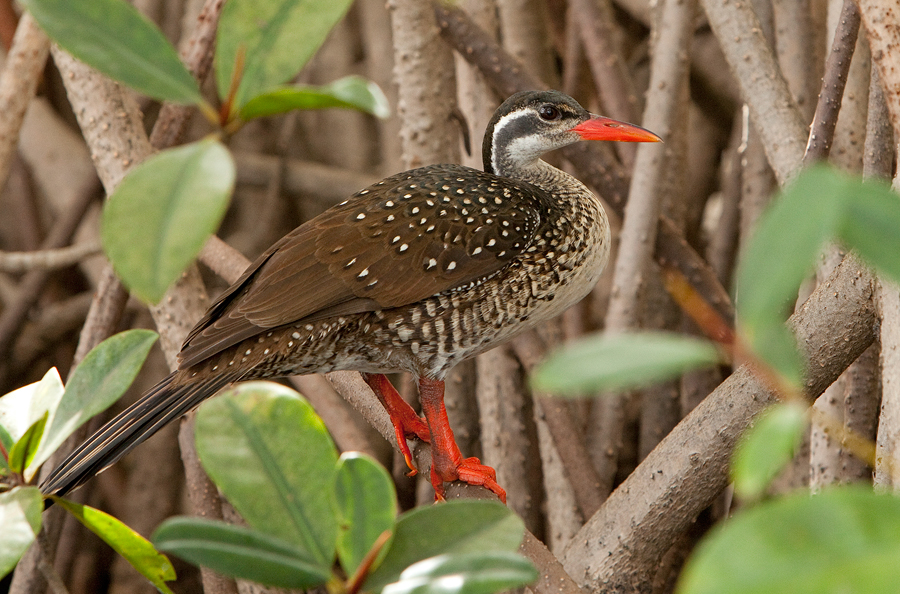
Podica senegalensis
TAXONOMY
Heliornis senegalensis Vieillot 17, Senegal. Four subspecies.
OTHER COMMON NAMES
English: Peter’s finfoot; French: Grйbifoulque d’Afrique; German:
Binsenralle; Spanish: Avesol Africano.
PHYSICAL
CHARACTERISTICS
13.8–23.2 in (35–59
cm); 0.74–1.93 lb
(338–879 g). Orange
feet, brown or blackish
back with variable
white spotting.
Underside light with
variable barring.
DISTRIBUTION
P. s. senegalensis:
Senegal east to eastern
Democratic Republic
of Congo
(Zaire), Uganda,
northwestern Tanzania
and Ethiopia; P. s. somereni: Kenya and northeastern Tanzania;
P. s. camerunensis: southern Cameroon, Congo and
northern Democratic Republic of Congo; P. s. petersii: Angola
east to Mozambique and south to eastern South Africa.
HABITAT
Permanent rivers, streams, and still waterbodies densely fringed
with reeds and overhanging trees; also mangroves and flooded
forests.
BEHAVIOR
Territorial, each pair defending several hundred yards (meters)
of waterway.
FEEDING ECOLOGY AND DIET
Forages in water and on land, taking invertebrates and small
vertebrates.
REPRODUCTIVE BIOLOGY
Breeds when water levels are high. Monogamous; lays two to
three eggs; incubation at least 12 days, by female; young semiprecocial.
CONSERVATION STATUS
Widespread; locally quite common but uncommon in eastern
Africa and considered Vulnerable in South Africa.
SIGNIFICANCE TO HUMANS
None known.
Photo Gallery of - African finfoot
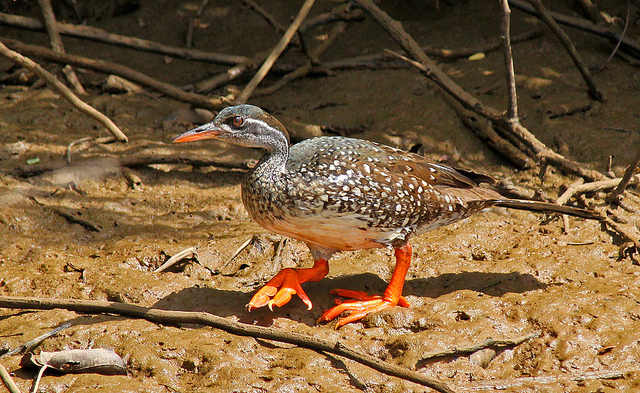
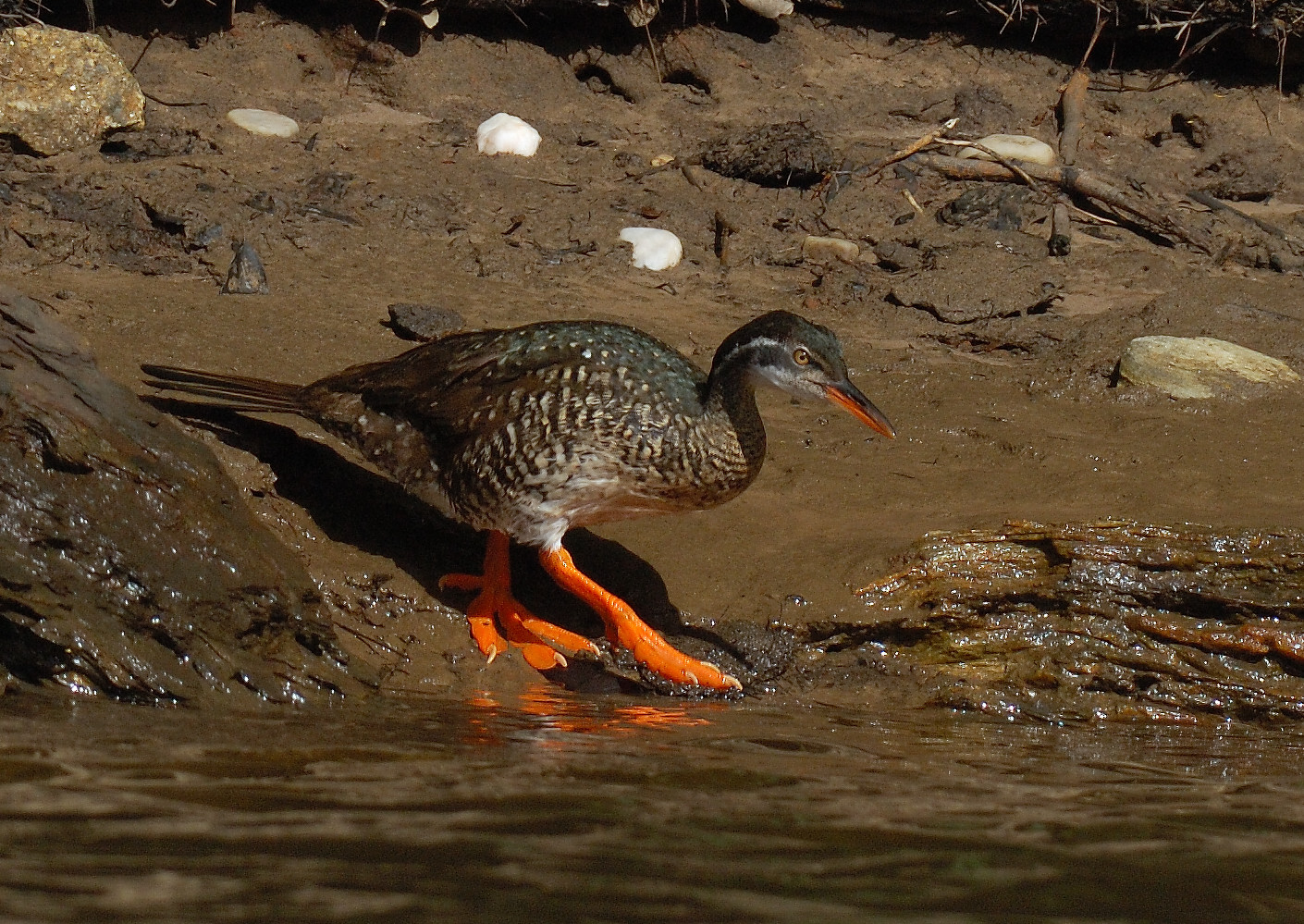
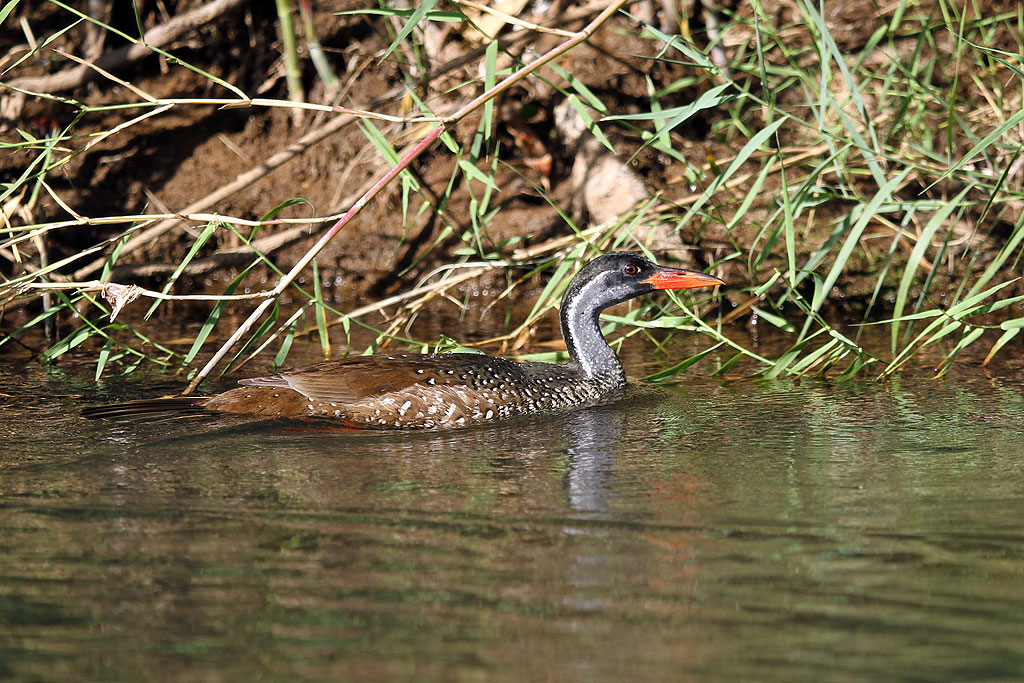
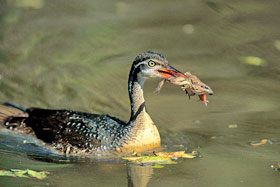
 Animalia Life
Animalia Life